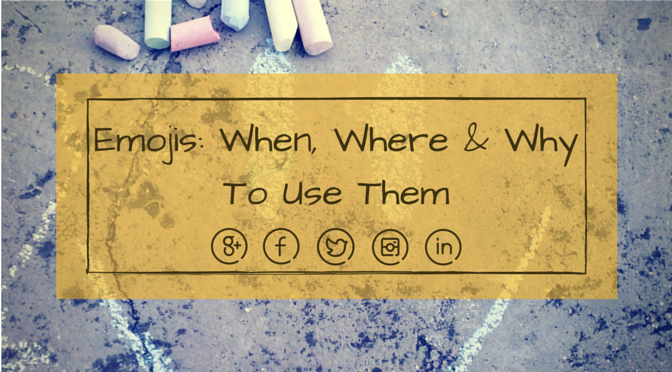
What’s all the fuss about emojis?
The jury has been out on the use of emojis in business for a long time. Having grown from the dark depths of chat applications like MSN Messenger and Habbo Hotel *shudder*, there’s seemingly nothing to be gained from using emojis in the world of business. If we accept that emojis are used to demonstrate emotion and feelings towards a statement we’re making, then surely there’s no place for them in a world of sales reports, customer services and serious campaigns.
The issue is that – thanks to social media – the way businesses communicate with their clients and customers is ever changing. Maintaining a social media presence and a good reputation has become an essential part of everyday business, and the high walls of formality and professionalism are coming down one by one.
So, why use emojis?
Sites like Twitter and Facebook accommodate the use of emojis and using them can help to reduce the formality and increase the ability to connect with a customer in more friendly terms. When thinking about your brand, it’s worth spending a few minutes selecting ‘approved emojis’ for your customer and community teams to use when responding the comments and questions online.
Emojis can also used creatively and add an element of artistic engagement to networks such as Instagram and Pinterest. If you’re posting a new product to Instagram, the inclusion of thematic or colour co-ordinated emojis can add a unique touch to your post. So, if you’re showcasing a new range of green-themed envrio-friendly notebooks, you can select an array of green emojis to include in the image caption. You can even pick emojis based on theme, such as plants, the earth and a ‘recycle’ emoji.
![]()
But emojis can also be problematic
Emojis are considered to be casual, friendly additions to online text. Whilst they can therefore be a great tool when it comes to customer interaction, it’s important to draw the line when you’re undertaking other types of business communications. Basically, no-one in the board room is going to be impressed by an annual sales report presentation that is adorned with smiley faces, hearts, flowers or other ‘relevant’ emojis.
Another problem exists in the fact that emojis are subject to different modes of interpretation. Written text in your social media contentis less likely to be misinterpreted or misconstrued, but emojis are images and symbols which can be a lot more subjective. It’s important to avoid unintentionally causing offence or implying something inappropriate. (I once had to explain to my well-meaning mother that adding a ‘wink face’ emoji to a post about what she’d done at the weekend gave it a certain kind of subtext). A great example of this: the previously innocent ‘aubergine’ emoji has now earned a reputation for being used to signify sexual arousal. Lovely stuff.

Emojis that you can probably put on your ‘non-approved’ or ‘use at own risk’ list.
Conclusion?
Using emojis on sites like Instagram, Twitter and Facebook generally have the green light, as there’s room for creativity and a reduced sense of formality between business and client. In terms of internal business, then if you know a colleague well, using emojis in private correspondence and with good judgement isn’t likely to become an office scandal.
The bottom line:
1) Practise good judgement and awareness when using emojis in any context.
2) Approving specific emojis can be a small but valuable part of your branding to keep your online persona consistent.
3) Including emojis in professional business emails, newsletters, presentations or reports is probably not worth the hit to your professional reputation.
By Olivia Rose French
Olivia is an expert writer, blogging specialist and Copywriter at Shake Social.
Struggling to maintain your own blog? We can help!